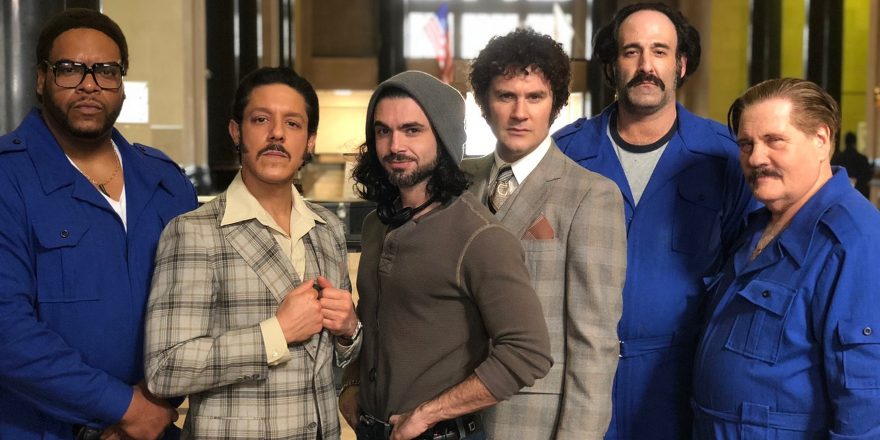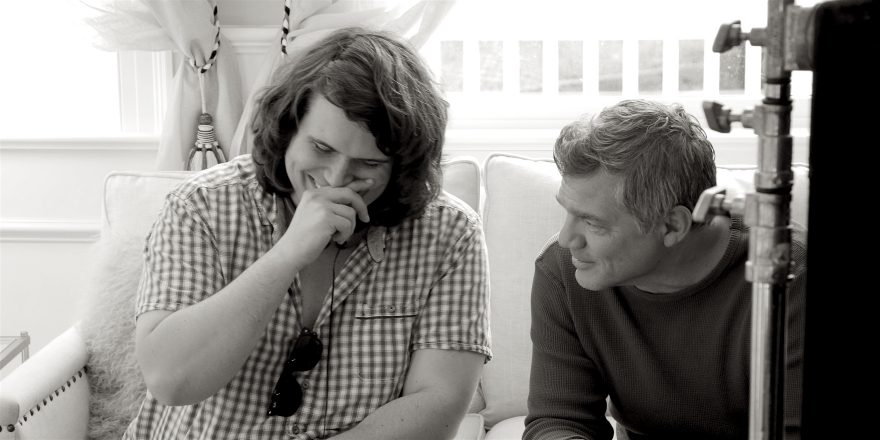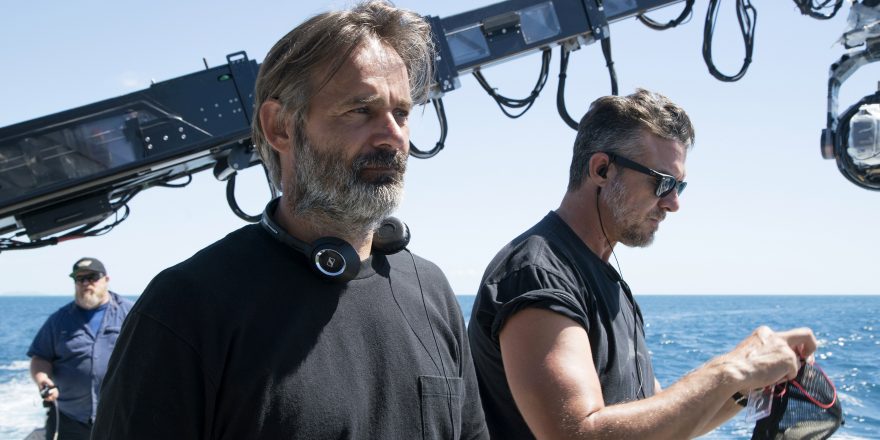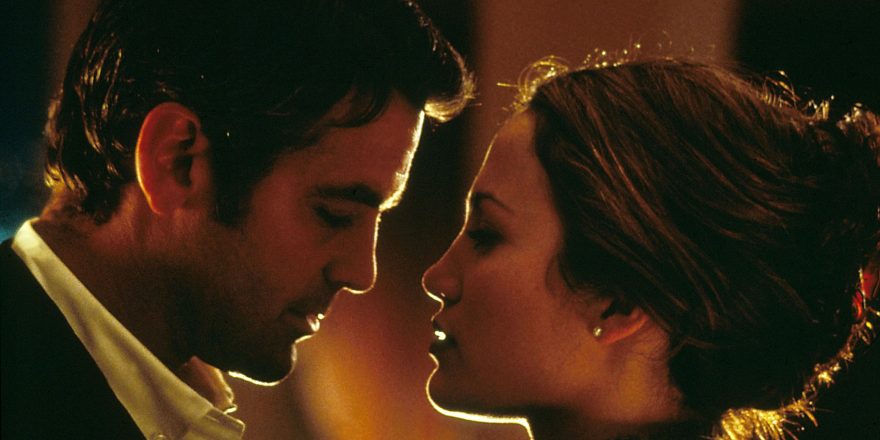My name’s Tommy DeNucci. Some people call me Tom, but my friends call me Tommy. And in case you couldn’t tell by my last name, I’m of Italian American descent. In my town, that’s something people brag about. “I’m 100 percent,” they say proudly. I grew up in Cranston, Rhode Island, not too far from the Italian neighborhood, Knightsville.
The place turns into a miniature Little Italy for one week every July, during the St. Mary’s Feast. Tradition is still very much intact and the festival is run the same way it has been for decades. Green, white and red banners line the streets, people fire up sausage and peppers on the sidewalks, the musical stylings of Frank and Dean fill the air, and on those nights, if you squint to avoid seeing all the people taking selfies under the fireworks, you might think it’s still 1970-something.
Rhode Island doesn’t have a professional sports team, but in my neighborhood, people followed gangsters like they were ballplayers. Kids could spout a well-known wiseguy’s arrest record like a batting average. These tales became like old street fables. The biggest tale of all, forever imbedded in my head, was the story of the Bonded Vault heist.
In 1975, Providence, Rhode Island, was the Wild West of the East Coast. It was the heyday of organized crime, and Mafia boss Raymond Patriarca was at the top of the food chain – by far the most feared man in all New England. Raymond ran protection for a secret vault, tucked away in the back of a functioning fur shop. It was the kind of place gangsters would take things they couldn’t put in a regular bank – stolen goods, shakedown money, all that good stuff. The place was considered untouchable and nobody would even think about robbing it. Until, one day, the impossible happened. A group of small-time criminals pulled off one of the largest heists in American history, a brazen robbery in which more than $30 million in cash, coins and jewelry were stolen from the vault. To this day, the money has never been recovered.
Now when you hear that, what’s your first reaction? “Gutsy move”? Well, for me, the first thing I thought was, “Why isn’t this a movie?”
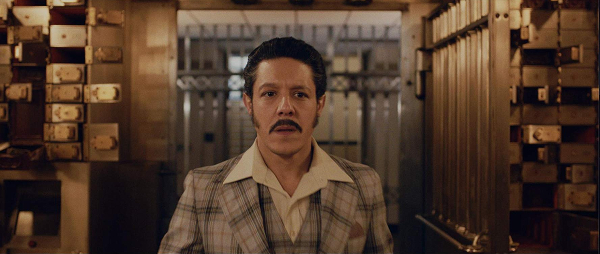
I buried that thought for a few years and went to film school at the New England Institute of Technology. After graduating, I was hired by producer Chad Verdi. At Verdi Productions, I was an intern on the creative team. It was pretty much a dream job. I was in Rhode Island, working for a local company, doing the one thing people told me I’d never be able to do in Rhode Island … make movies. I worked harder than I’d ever worked. I wrote around the clock, many nights falling asleep with my face on the keyboard. It didn’t take long for my first script, Self Storage, to grab Chad’s attention. He was looking for a hot new horror concept and he found it in Self Storage. He greenlit the script, and I was directing my first movie.
For a few years after this I cut my teeth on horror movies. The budgets were small, but I approached everything with a “do whatever it takes” attitude and we always ended up putting a lot of value on the screen. I built relationships. I engaged with the community. I was met with nothing but support.
After a few horror movies and a couple family comedies, I had finally gained Chad’s full confidence and he gave me my first multi-million-dollar budget to direct Vault. (OK, it was a couple million, but that still counts as multi, right?)
What a difference a few million can make! The project was 10 times bigger than anything I had ever directed, and it gave me the opportunity to work with some of the top talent in the industry. Finally I could work with a full union crew, experienced, talented professionals who knew exactly what I needed to put my vision on the screen, effectively and efficiently.
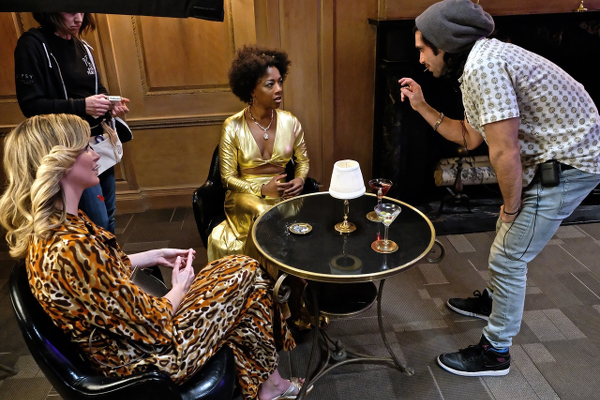
Even with a couple million bucks, I quickly found out the reality that making a 1970s period piece is extremely difficult. The costumes, the props, the cars – everything had to be from 1975 or before. It is a massive undertaking to source enough props, costumes and cars to travel back to 1975. If this part isn’t done properly, the entire movie is a failure. All it takes is one car from the early ’80s to ruin the illusion. If we were going to do this right, we were going to need a lot of help. And the people of Rhode Island were there to help.
The first thing we needed was a base of operations, a building big enough to act as our production offices and be converted into a temporary soundstage. We turned to Rhode Island’s oldest, tallest skyscraper, the historic Industrial National Bank Building, aka the “Superman Building,” a 26-floor building in the heart of downtown Providence. On our first tour of the space, we were led down a winding stairwell with marble walls and ornate Art Deco designs – a level of craftsmanship you just don’t see these days anywhere, let alone in a stairwell. As we turned the corner, my eyes lit up as I stared right at the most magnificent vault I had ever seen. It was perfect. We had to have it. I turned to Chad and said, “We need this place.” Chad went into action and after some brief negotiations, we struck a deal. Soon, we were bringing new life to this dank and defunct space, turning it into a working soundstage for our film. The official shooting script was about 100 pages, and we must have shot at least 65 of them in that building. What an asset that building was, sitting right in my backyard.
After we finished shooting at the Superman Building, we drove about 15 minutes to my hometown, Cranston. There we shot at the ACI (Adult Correctional Institutions) – the same prison my parents would point to when I was a kid, threatening to drop me off there if I acted up.
The prison was an amazing location and thanks to the Steve Feinberg and the Rhode Island Film and Television Office, we were able to meet with prison officials and gain access to the grounds. We filmed exteriors outside of the functioning ACI, which houses the most dangerous criminals in the state. When it came time to shoot our prison interiors, we jumped back to the Superman Building, where we’d built prison sets. It’s funny because the cell where Raymond Patriarca (played by Chazz Palminteri) is housed was actually an old counting room inside the vault that production designer Gabe Wilson converted into a tricked-out gangster pad.
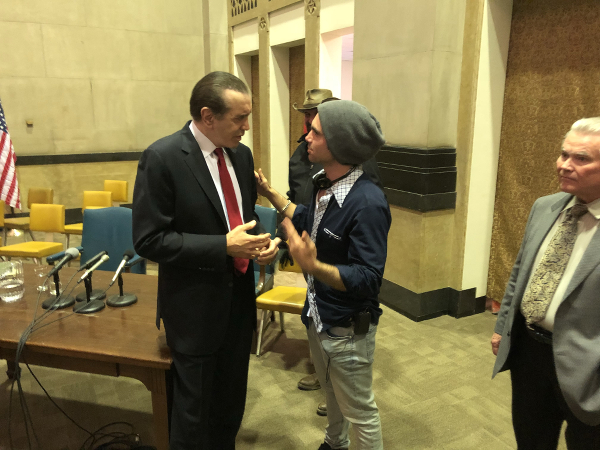
We couldn’t afford to hire a construction team to build a period house from the ’70s, but Chad mentioned that his grandmother’s house hadn’t changed for about 50 years. It was right across the street from St. Mary’s, where my parents got married and I made my first communion – smack dab in that Little Italy section of Cranston I mentioned before. The place was right out of The Brady Bunch. Wood paneling everywhere. Marvelously tacky wallpaper. Shag rugs. Plastic cover on the couch. It even had old-school TV trays adorned with illustrations of horses storming through a creek. It would have cost us a small fortune to recreate this, but there it all was, waiting for us at Chad’s grandma’s.
It seemed whenever we were faced with problems, we found the solutions in our midst. We needed to create a period fur shop from the ’70s, but the local prop shops don’t have that many furs just laying around. So, I called my 82-year-old friend, Sheldon, a movie lover I used to play cards with who had been following my career since I was in film school. For decades, Sheldon has been one of the top furriers in Rhode Island and he still has an incredible inventory. In addition to the furs, he loaned us vintage mannequins, old-school metal fur racks, and vintage advertisements to hang on the wall of our Hudson Furs set. We even borrowed the workbench from his backroom, where they’ve been custom making these coats since the ’60s. The best part was all this stuff was from exactly the right period and added a tremendous authenticity to those scenes inside Hudson Furs.
Picture cars are often a major line item in any period film. In the larger movie markets, it’s easy to find what you’re looking for, but in Rhode Island we needed to get a little more creative. We ran social media campaigns with slick artwork, featuring classic cars on movie sets. “Make your car a star.” People loved it and we received dozens of submissions. The car collectors hung out on set, took photos with the actors, and in some cases even got a chance to have a cameo in the movie. Something like that probably wouldn’t fly in New York or Los Angeles, but here, people aren’t jaded by the business – they are still fascinated and excited to be a part of a movie.
The story of the Bonded Vault heist means so much to so many Rhode Islanders. People around here have no problem telling you exactly how they feel. That’s what I love about R.I. and the Northeast in general – people speak their mind and don’t pull punches. Which is why there was a lot of pressure on us to get this movie right and above all keep ’em entertained. We had home field advantage and we used it. I learned the importance of the people around you. Community. Connecting the dots. When backed into a corner, use what you’ve got. Don’t make excuses, make more creative decisions.
One of my favorite things about making a movie is seeing the power of pure creativity in action, solving problems in order to carry out the vision and tell the story. It’s a powerful thing. We’re able to go back in time and bring some of these legendary characters to life. We’re able to take these storied gangsters that have been the center of dinnertime conversation in Italian-American homes across Rhode Island for decades, and introducing them to a whole new generation, far beyond the reaches of Providence, Rhode Island.



